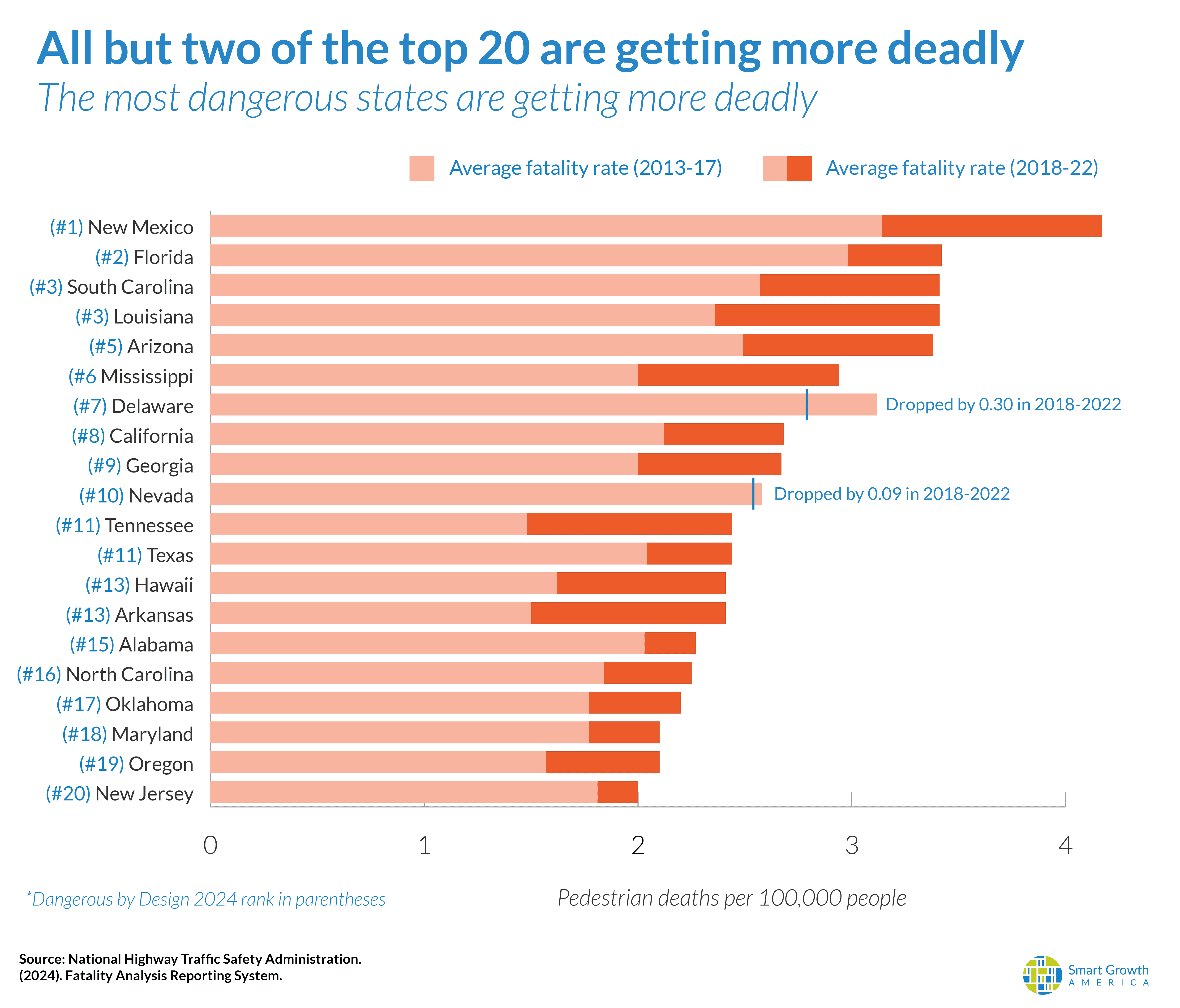Safe Streets for All
Our first Dangerous by Design 2024 release took a national and metro-focused look at the crisis of people struck and killed while walking on streets across America, deaths that have increased by 75 percent since 2010. Black and American Indian/Alaska Native persons, older adults, and people walking in low-income communities are killed at much higher rates. Our current approach to roadway safety is not working.
To continue our exploration into how the design of our streets—designed primarily to move cars quickly at the expense of keeping everyone safe—is connected to this historic increase in pedestrian deaths, we are releasing this addendum looking more closely at state-level trends.
Walking in one of the deadliest states in America

Design produces danger for all road users


The Centers for Disease Control and Prevention provided support for data analysis and synthesis used in the report under cooperative agreement OT18-1802 supporting the Active People, Healthy NationSM Initiative, a national initiative led by the CDC to help 27 million Americans become more physically active by 2027.
Learn more: https://www.cdc.gov/physicalactivity/activepeoplehealthynation/index.html. The findings and conclusions in this report are those of the authors and do not necessarily represent the official position of the Centers for Disease Control and Prevention.

© 2025 Smart Growth America. All rights reserved
Site By3Lane Marketing










